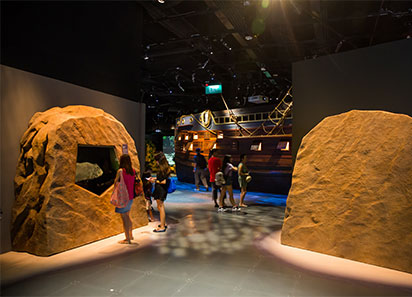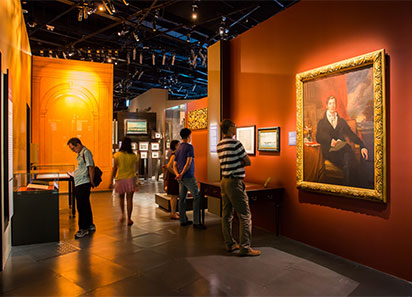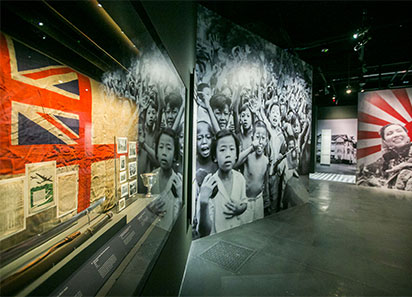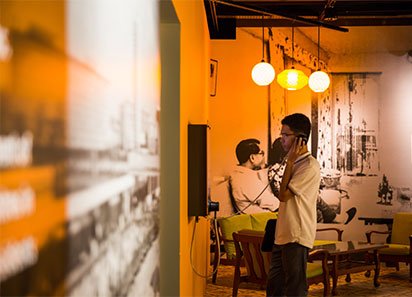Singapore History Gallery
Singapura (1299 – 1818)
Geologists have found that the oldest rock formations on Singapore date back to the Paleozoic Era. From prehistoric tools found in Western Singapore and Pulau Ubin, an island off Singapore, a settlement may have existed as early as several thousand years ago.
The earliest written records to have mentioned Singapore describe it as a thriving port in the 14th century. It was known by different names then: the Chinese traders called it Danmaxi (Temasik or Temasek), while in the Sejarah Melayu (The Malay Annals), it was called Singapura.
Possibly ruled by an elite class who lived on what is now Fort Canning Hill, Singapore was connected by trade and politics to not only the Malay Archipelago, but also Siam (Thailand), China and India. Learn about the commonly traded items such as ceramics and hornbill casques, as well as Singapore’s inhabitants and their ways of life.

Crown Colony (1819 – 1941)
In 1819, Sir Stamford Raffles and Major William Farquhar arrived in Singapore. They struck a deal with the local Malay rulers to set up a British trading port, which Raffles declared would be “open to ships and vessels of every nation free of duty”. This brought in traders and ships from as far away as Arabia and Africa.
Singapore became a Crown colony in 1867. As the British empire flourished, so did Singapore. By 1919, Singapore was a modern city, boasting the second largest dry dock in the world with modern conveniences such as electricity, motorcars, and international telegraph and telephone connections.
Here, you will discover key historical figures and how they helped to catapult Singapore to become the centre of trade in Southeast Asia by the 1850s. You can also catch a glimpse of the migrants’ customs and way of life, complete with a replica of the opium dens they used to frequent.

Syonan-To (1942 – 1945)
Before World War Two began, the British had equipped Singapore with coastal guns and an air force. Singapore became known as the “Gibraltar of the East” or “Fortress Singapore”.
On 8 December 1941, Singapore experienced war for the first time when the Japanese bombed the city. After a swift 70-day campaign, the Japanese defeated the British and occupied the Malay Peninsula and Singapore. Singapore was placed under military occupation and renamed Syonan-To (“Light of the South” in Japanese). The Singapore population struggled with food and fuel shortages, disease and, at its worst, violence and harassment from the Japanese. The occupation ended only when Japan surrendered to the Allies in 1945.
Explore a wide range of military artefacts including weapons, uniforms and a replica of a Japanese tank used during World War Two, and trace how key events of the war unfolded. Through personal belongings, photographs and documents, discover life under the Japanese Occupation and how various individuals and groups responded with resourcefulness and fortitude during this difficult period.

Singapore (1945 – present)
After World War Two, a wave of decolonisation began to sweep through Asia and Africa. In 1959, Singapore was granted self-government and the first general election for a fully-elected government was held. The People’s Action Party (PAP) won and its leader, Lee Kuan Yew, became Singapore’s first prime minister. Following a merger with, and then separation from, Malaysia, Singapore became a fully independent nation in 1965.
Over the next two decades, the government tackled the challenges faced by the growing nation, such as unemployment and insufficient housing. It took bold steps to introduce industrialisation, encourage foreign investment and tourism, provide modern public housing and education, and clean up the environment.
The artefacts here provide a glimpse into some of these key developments in the years after Singapore’s independence.
